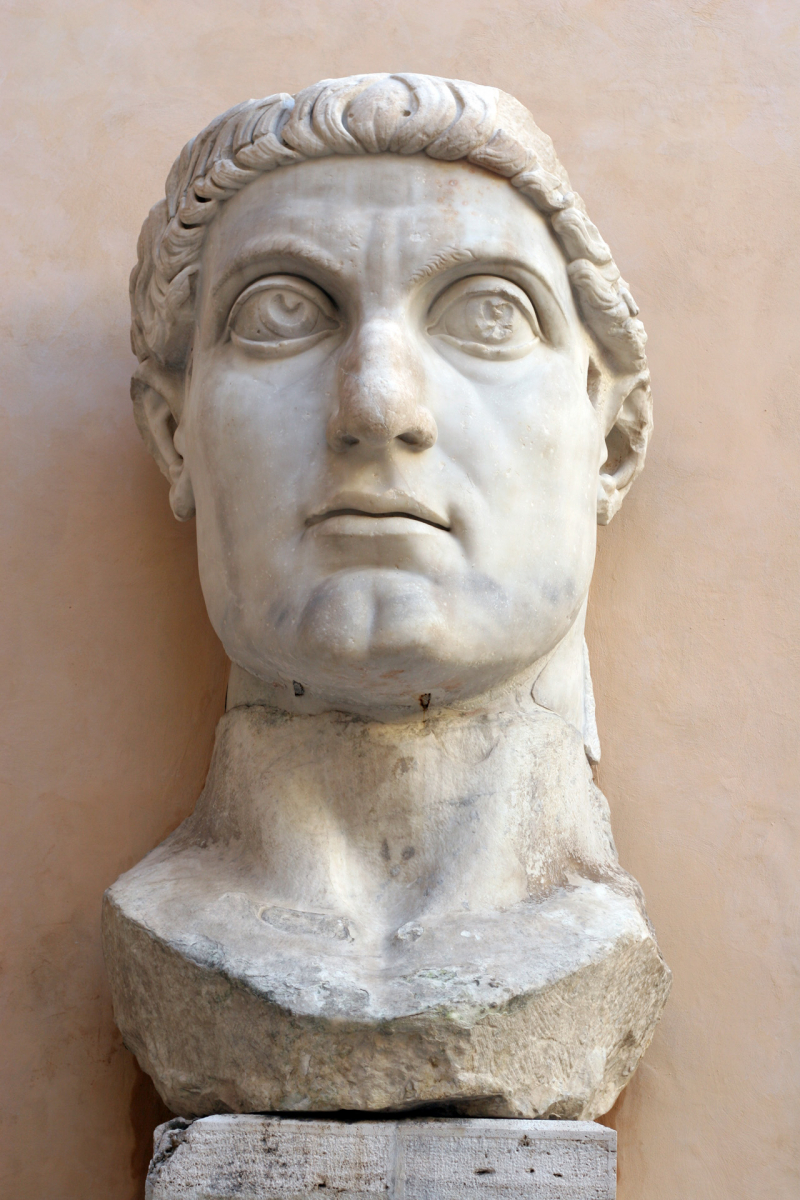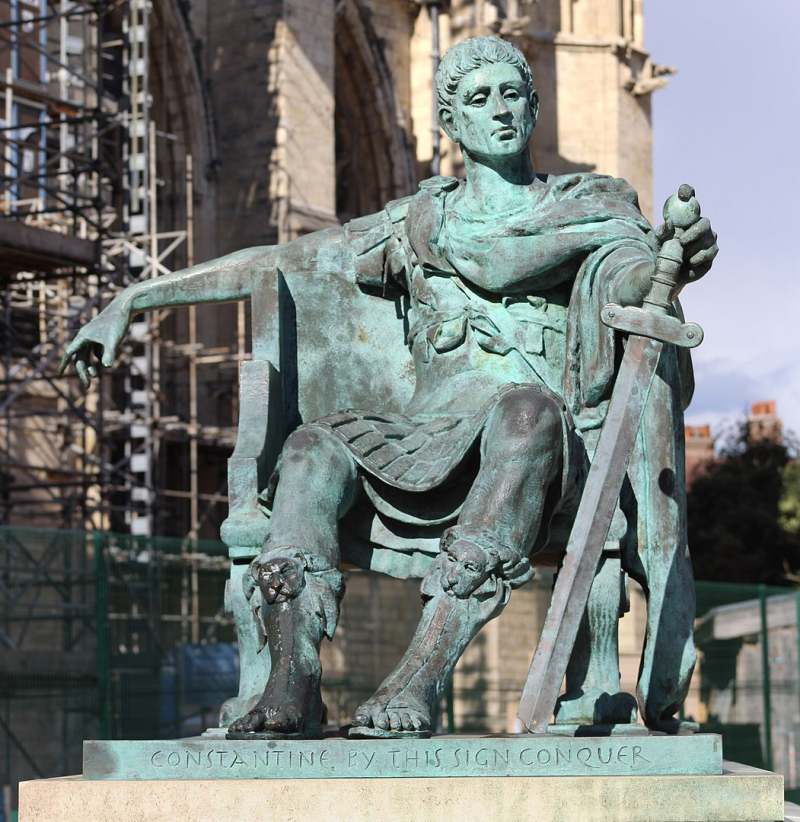Constantine I

Constantine I (27 February c. 272 – 22 May 337), usually known as Constantine the Great, was the first Roman Emperor to convert to Christianity and reigned from 306 to 337 AD. He was born at Naissus, Dacia Mediterranea (now Ni, Serbia), the son of Flavius Constantius, a Roman army officer of Illyrian ancestry who was one of the Tetrarchy's four kings. Helena, his mother, was a Greek Christian of humble birth. Constantine distinguished himself during the reigns of Diocletian and Galerius, the Roman emperors. He began his career in the eastern provinces (against barbarians and Persians), before being called back to the west (in AD 305) to battle alongside his father in Britain. After his father died in 306, Constantine ascended to the throne. He was hailed by his army at Eboracum (York, England) and eventually defeated emperors Maxentius and Licinius in civil wars to become the sole ruler of the Roman Empire by 324.
The Roman army was restructured to include mobile units and garrison forces capable of dealing with domestic problems and barbarian invasions. Constantine launched victorious operations against the tribes on the Roman frontiers and repopulated lands abandoned by his predecessors during the Third Century Crisis with Roman citizens.
Constantine's reign was a distinct phase in Roman Empire history and a watershed moment in the transition from classical antiquity to the Middle Ages. He constructed a new imperial house in Byzantium and christened it Constantinople after himself. It later became the empire's capital for over a thousand years, and modern historians refer to the later Eastern Roman Empire as the Byzantine Empire. By leaving the empire to his sons and other members of the Constantinian dynasty, he effectively replaced Diocletian's Tetrarchy with the de facto principle of dynastic succession. His renown flourished during his children's lives and for generations following his rule. The medieval church regarded him as a model of virtue, while secular monarchs regarded him as a model, a reference point, and a symbol of imperial legitimacy and identity. Due to the rediscovery of anti-Constantinian writings, there were more negative assessments of his reign beginning with the Renaissance.













